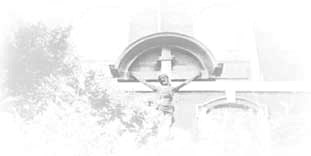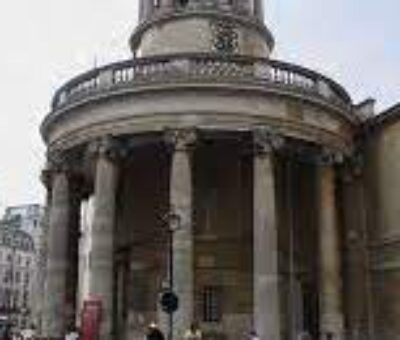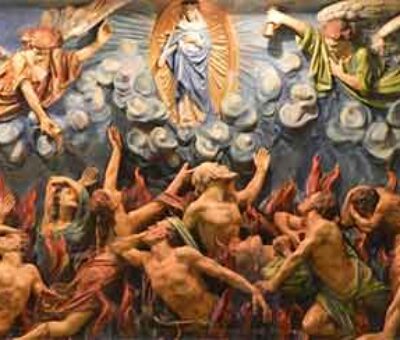Jesus: Historical Evidence for the Resurrection of Christ
 In the past 15 years I have read a number of great books and articles dealing with the death, burial and resurrection of Jesus Christ. And over and over one can only come to the conclusion that Christ was not only a real person – but he did in fact overcome death on the cross.
In the past 15 years I have read a number of great books and articles dealing with the death, burial and resurrection of Jesus Christ. And over and over one can only come to the conclusion that Christ was not only a real person – but he did in fact overcome death on the cross.
The article below is a great example of one of many thorough looks at this subject which the whole of history may hinge on – should it turn out to in fact be true.
Please read with an open mind and remember all historic documents and court cases contain discrepancies as a matter of course – in fact no judge would expect all the information to correlate exactly as it never does in real life.
What’s important are the general correlations from different people groups – believers and unbelievers alike, what we know about the Romans, along with the Biblical prophecies that just can’t be ignored.
The Resurrection Evidence: A Brief Survey
Approaching the Bible by Christopher Louis Lang
To examine the evidence for the resurrection we must place ourselves in the historical situation. The events surrounding the life and death of Christ didn’t occur at a place where we can gain no knowledge of them, they occurred in history, on earth, and were recorded by men who witnessed the events.
When we approach an ancient document such as the Bible or another ancient document such as Tacitus’ History of Rome (115 A.D.) we must come to the text with an understanding attitude. This doesn’t mean that we assume the text to be 100 per cent true. But we should ask the right questions. In the first century much less writing took place than does in our time.
Many were illiterate, few could read, much less write, and paper or parchment (leather) to was expensive. The incentive to fabricate was not as it is today. In other words, The National Enquirer, could never have been published at this time. High regard was given to writing and the luxury to create fictional material was virtually non-existent, for instance there was no such thing as a novel or a newspaper, although there were artistic writings such as poetry.
The Bible however, is a much different kind of literature. It was not written as a poem or story, although it contains poetry. It was for the most part written as history and was intended to communicate truth throughout.
The gospel of Luke begins:
Inasmuch as many have undertaken to compile an account of the things accomplished among us, just as those who from the beginning were eyewitnesses and servants of the word [Paul, Peter, etc] have handed them down to us, it seemed fitting for me as well, having investigated everything carefully from the beginning, to write it out for you in consecutive order, most excellent Theophilus; so that you might know the exact truth about the things you have been taught. (Lk 1:1-4)
Luke was not an apostle, he was however the companion of Paul and probably dictated some of his letters. Luke tells us that he is writing in consecutive order because the other gospels, Matthew and Mark and John, are written more by topic than chronologically.
How do we know anything historically?
There is no “scientific” proof that Lincoln was the president. We cannot recreate him, bring him back to life or reproduce the experiment. We cannot calculate an equation that tells us that he was. But we can assert with a high degree of probability that Lincoln was indeed president and was assassinated in 1865.
We do this by appealing to historical evidence. Many people saw Lincoln. We have some of his writings and even his picture, not to mention his face on our pennies. But none of this “proves”, scientifically that Lincoln ever lived or was the president.
The kind of evidence used in historical research is the same used in a court of law. In a courtroom case certain kinds of evidences are appealed to in order to determine what exactly happened, eyewitnesses are questioned, motives are examined, and physical evidence is scrutinised such as fingerprints or journal writings.
The evidence we have for Christ’s life, death, and resurrection is not as great as that for Lincoln, nor as recent But it is better than we have that Plato ever lived, or Homer, or many historical figures that we take for granted.
The Resurrection of Jesus Christ: was the resurrection of Christ a historical event?
In regard to direct evidences for the resurrection of Christ, there are a number of historical facts that we can glean from the biblical texts. These will be the basis of our argument for Jesus’ resurrection.They are:
1) Jesus died by crucifixion,
2) he was buried in a tomb known to the authorities,
3) his disciples were distraught because of his death,
4) his tomb was found empty,
5) the disciples believed that they saw Jesus risen from the grave,
6) this experience changed their lives,
7) the message was central to early church teachings,
8) it was preached in the very city in which Jesus died
Crucifixion was a most painful and certain means of death. Christ was whipped by Roman soldiers beforehand. (Mt 27:26-31). The Romans give thirty-nine lashes before crucifixion. (Forty lashes was considered legally dead after which point an individual could no longer be punished.) This would induce considerable blood loss.
The Romans used a “cat-of-nine-tails.” This whip had many ends to it – usually pieces of bone, glass, and metal shards were attached to it and would rip open the flesh. After being whipped Jesus was forced to carry his own cross to the place of crucifixion.
The gospel records indicate that in his weakened state, he was unable to carry it (it would have been carried on his wounded back Mt 27:32). Incidentally, Jesus was probably not a weak man. Before his preaching ministry he’d been a carpenter and during he walked hundreds of miles throughout Israel.
Jesus was then nailed to a Roman cross and his death came within hours. The Jews were concerned that no bodies would be left on crosses at sundown that evening because it was the beginning of the Sabbath. “The Jews therefore, because it was the day of preparation, and so the bodies should not remain on the cross on the Sabbath (for that Sabbath was a high day), asked Pilate that their legs be broken, and they be taken away” (Jn 19:31). Crucifixion victims, depending on their health and method of crucifixion, could last days on a cross. Victims died primarily through blood loss, dehydration, and suffocation.
In order to breath when on a cross, it is necessary for the victim to push up with their legs to release the pressure on the lungs. This is a painful process because of the nails in both the hands and feet or ankles. The purpose of breaking the victims legs was so that they would be unable to push themselves up to breath and thus dies more quickly.
However, the Roman guards realized Jesus was dead already. “So The soldiers broke the legs of the first man, and of the other man who was crucified with Him; but coming to Jesus, they saw that He was already dead, they did not break His legs; but one of the soldiers pierced His side with a spear, and immediately there came out blood and water” (Jn 19:32-34). John records this detail of piercing Jesus side to indicate that he was in fact dead.
In an article published in the Journal of the American Medical Association the doctors examining the historical evidence concluded that the spear probably pierced the sack of fluid that surrounds the heart (JAMA, Vol., 255, No. 11, 1986, p. 1455ff ). If he had not been dead before this time, he was surely dead now.
The gospels indicate that upon his death two prominent Jewish admirers came to gather Christ’s body. “And after these things Joseph of Arimathea, being a disciple of Jesus, but a secret one, for fear of the Jews, asked Pilate that he might take away the body of Jesus; and Pilate granted permission. And Nicodemus came also, who had first come to Him by night; bringing a mixture of myrrh and aloes, about a hundred pounds weight” (Jn 19:38). These men were both of the ruling class of the Jews (seventy-one men in all) and well known in the community as well as to Pilate. The mention of prominent men indicates that this account is not fictitious.
If the disciples had created this story it would have been counterproductive to make up a person that was supposed to be in a prominent position. This could easily have been refuted were it not true. (Moreland, p. 167).
“And Joseph took the body and wrapped it in a clean linen cloth, and laid it in his own new tomb, which he had hewn out in the rock; and he rolled a large stone against the entrance of the tomb and went away. And Mary Magdalene was there, and the other Mary, sitting opposite the grave” (Mt 27:59-61).
Archaeological evidence confirms the description of this tomb being that of a rich man, which was rare in this day. The probable location described in the gospels correlates with the specific location of the Garden Gate at the north Wall of Jerusalem where tombs have been excavated like those described in which Jesus was laid (Ibid.)
There are some important features to this account. First, this was not a poor man’s grave. Only the rich had tombs carved in rock and situated in a garden area. Second, the tomb was identified by Joseph, Nicodemus, and the women who watched where he was buried. The grave is also carefully marked by the Jewish and Roman authorities as this same passage records,
Now on the next day, which is the one after the preparation, the chief priests and the Pharisees gathered together with Pilate, and said, “Sir, we remember that when He was still alive that deceiver said, ‘After three days I am to rise again.’ Therefore give orders for the grave to be made secure until the third day, lest the disciples come and steal Him away and say to the people, ‘He has risen from the dead,’ and the last deception will be worse than the first” Pilate said to them, “You have a guard; go, make it as secure as you know how.” And they went and made the grave secure, and along with the guard they set a seal on the stone. (Mt 27:62-66)
It is also important to note here, that a Roman guard is a group of soldiers not an individual. The seal which was placed over the grave was a wax seal with rope, to break this Roman seal was punishable by death in the Roman empire.
We know also that the disciples were very disillusioned by Jesus’ death. The man they had followed around Israel for three years, whom they believed would be the next ruler of the nation, had just been crucified. They had expected a Messiah who would be king, not a criminal to be convicted and killed in the most humiliating way. They probably felt that their lives had been wasted for the past few years and they had publicly been made fools.
Of course, they realized that what they had experienced with Christ for the last three years was significant. But how and what was significant, they did not yet understand. The disciples scattered when Christ was arrested in the garden of Gethsemene (Mrk 14:50ff). Peter denied ever knowing Jesus during his “trial” on the night before his crucifixion (Mrk 14:66ff). The disciples were ready to return to their lives as fishermen because they thought it was over (Jn 21:3).
Three days after his burial the tomb was found empty. Each of the gospels reports that Jesus’ tomb was found empty (Mt 28: 1-10, Mrk 16:1-8, Lk 24: 1-3; Jn 20:1-10). “But on the first day of the week, at early dawn, they came to the tomb, bringing the spices which they had prepared. And they found the stone rolled away from the tomb, but when they entered, they did not find the body of the Lord Jesus” (Lk 24:1-3). When it had been reported to the disciples by Mary that the tomb was empty, they came running:
Simon Peter came, following him, and entered the tomb and he saw the linen wrappings lying there, and the face-cloth, which had been on His head, not lying with the linen wrappings, but rolled up in a place by itself. So the other disciple who had first come to the tomb entered then also, and he saw and believed [that the body was gone].
For as yet they did not understand the Scripture, that He must rise again from the dead. So the disciples went away again to their own homes. (Jn 20:6-10) This recording is significant, but what is more significant is that the events which followed Jesus’ resurrection bear witness to the fact that his body was indeed missing.
An historical question confronts us at this point. What happened to the body. Scholars have generally agreed that the body was indeed gone and many explanations have been put forth to account for this fact. The most common response is that it was stolen. But this view is hampered with many problems. Who would have stolen it? The Jews would not want to steal it.
It was they that posted the Roman guard and they had the most to gain ensuring that Jesus stayed in his tomb – his teachings dying with him. The Romans had no motivation. It was in Pilate’s best interest as a governor whose job was in jeopardy to keep his realm quiet, not to mention that the Romans hated the Jewish religious fanaticism.
The only reasonable explanation for the missing body is that the disciples stole it. But is this plausible? These are the same men who scattered when Jesus was arrested. They were cowardly. They were disillusioned and depressed. And they would need to overpower the Roman guards. It is not likely that they would have had the courage or motivation to carry out such a plan. Why would they steal it? Possibly they wanted to start a new religion, to gain fame and fortune.
This is possible but not likely as we will see. The disciples would have put themselves in great risk to steal the body. The Jews and Romans both wanted this disruption stopped, had they believed that the disciples stole the body they would have dragged them into prison and beaten them until they confessed and produced the body. No such thing happened.
A number of incidental details in this account bear the markings of history as opposed to fraud or fiction. The gospels do not portray the disciples in a very glamorous light. If the disciples had propagated this myth we would expect their own accounts of the events to paint them in a better light than we actually see them in. The disciples were not the first to see the risen Christ rather, a group of women were.
The disciples were very reluctant to believe that Jesus was alive again when the women reported what they had seen. “Now they were Mary Magdalene and Joanna and Mary the mother of James; also the other women with them were telling these things to the apostles. And these words appeared to them as nonsense, and they would not believe them” (Lk 24:10,11). Thomas response was, “Unless I shall see in His hands the imprint of the nails, and put my finger into the place of the nails, and put my hand into His side, I will not believe” (Jn 20:25). These men knew that when someone died, they were dead. Thomas was no fool.
It is of crucial importance to notice in all the accounts that the women were the first to see the risen Jesus (Jn 20:11-17; Lk 24:1-9; Mrk 16:1-8; Mt 28:1-7). In the first century women had no legal power as witnesses in a court of law. A woman’s testimony was unacceptable. But it is to the women that Jesus first appears. If the story is fabricated, why choose women, whose testimony no one would accept, to be the first witnesses? Instead of being a story concocted by the disciples for their own gain, it appears to be an historical record of what actually took place.
When Peter stuck his head in the tomb he saw something unique that made him realize that something out of the ordinary had happened there. He saw the linen wrappings that Joseph and Nicodemus had used to coat the body. This was done by wrapping the body, head to foot, in cloth and caking on the spices and burial ointments which would be reapplied in succeeding days to help the smell of decomposition.
Peter probably saw the wrappings in the shape of a body without a body inside. But he also saw the head cloth, “rolled up in a place by itself.” No one stealing the body would have had time to roll up the face cloth and carefully set it aside. This is a curious detail that caught Peter’s attention. But this was only a foreshadowing of what was to come as Peter and the others personally experienced Jesus Christ in the succeeding days.
And while they were telling these things, He Himself stood in their midst. But they were startled and frightened and thought they were seeing a spirit. And He said to them, “Why are you troubled, and why do doubts arise in your hearts? See My hands and My feet, that it is I Myself; touch Me and see, for a spirit does not have flash and bones as you see that I have.” (Lk 23:36-39)
This is no less remarkable for us today than it was for them. And we can understand their reluctance to accept him. But they came to believe that they had witnessed something unique as Jesus appeared to them many times over a period of four days. These experiences had a profound impact on their lives.
How their lives changed after they had seen the risen Jesus is another mark of the story’s truthfulness. The disciples became the forerunners of a new movement that swept the world. They spoke out and were persecuted for the message and they ultimately gave their lives it: Jesus Christ rose from the dead. Reliable historical sources tell us that all twelve of the disciples except John died as martyrs. Peter was crucified in Rome. Paul was beheaded. And James was stoned to death, to name a few. This is of crucial importance. If they had pulled off a hoax, why would they go to their graves proclaiming that it actually happened. Certainly, many have died for a lie.
Nazis gave their lives for what was false. Plenty of other religious followers have died for their faith, but the crucial point here is that the disciples would have known it was a lie, if they had stolen the body or made up the story. They all would have died for what they knew was a lie. Is it plausible to believe that not one of them, under the threat of death would have admitted, “we made the whole thing up?” What they saw changed their lives. They believed they had seen Jesus Christ rise from the dead.
And because of what they believed they saw, these men who were meek suddenly became powerful spokesmen for Jesus Christ. Peter who denied Christ a few weeks earlier preached to over three thousand people in Acts 2.
Men of Israel, listen to these words: Jesus the Nazarene, a man attested to you by God with miracles and wonders and signs which God performed through Him in your midst, just as you yourselves know -[he is appealing to their common knowledge of Jesus and what he did] this man, delivered up by the predetermined plan and foreknowledge of God, you nailed to a cross by the hands of godless men and put Him to death. And God raised Him up again, putting and end to the agony of death, since it was impossible for Him to be held in its power. (Acts 2:22-24)
Not only were they now bold spokesmen, but of a fundamentally different religion than Judaism. For a Jew of the first century to change his religion or preach some heretical doctrine would be to risk eternal damnation. (Moreland, p. 172). For us in the twentieth century, we are not surprised by new religions, but this kind of hoax is almost unthinkable in first century Judaism whose culture and beliefs changed slowly (Ibid., p. 180). They were convinced that what they saw and experienced was true.
What did the disciples see? Did they see a vision they assumed was the risen Christ? Because of the strength of the evidence that something did happen that changed the disciples’ lives, some critics have suggested the idea that they hallucinated. There are two problems with this theory: it doesn’t match the what we know of the account and it doesn’t match what we know of the psychology of hallucinations.
J.P. Moreland summarises the nature of hallucinations well.
First, hallucinations happen to persons who are high-strung, highly imaginative, and nervous. Second, they are linked in an individual’s subconscious to his past beliefs and experiences. Third, it is extremely unlikely that two or more people would have the same hallucination at the same time. Fourth, they usually occur at particular places (places of nostalgia which create a reminiscing mood) and they recur over a long period of time. (p. 177)
I would add further that the idea of mass hallucinations has been disproven in modern psychology. If you hold that what the disciples saw was an hallucination, then you must acknowledge that they experienced this hallucination in groups of three, four, twelve, and even five hundred people.
The hallucination theory does not fit what we know of the disciples’ expectations. As said earlier, the disciples were not expecting Christ to rise from the dead. They had no concept in Judaism of the Messiah rising physically from the dead with the same body, a body they could touch and interact with. Nor do the descriptions given in the gospels reflect the kind of vagueness that makes up an hallucination. What they experienced was concrete. They could recall and explain it clearly. And because many of them experienced the same thing, separately and together, they could confirm their experiences with each other.
The hallucination theory also fails to explain one other fact: the empty tomb. Had the disciples, and many others, hallucinated Jesus’ appearances, the commotion they were causing in Jerusalem could have been easily stopped by producing the body. There is nothing said in history about whether the Romans and Jews tried to produce Jesus’ body. But it is crucial in this case that there is nothing said in recorded history about what happened to Jesus’ body other than what we find in the gospels. Had Jesus’ body been exhumed by the Jews or Romans and presented to people who were deluded about his resurrection, the early church couldn’t have got started. But the movement did start and the resurrection of Jesus was the grounds on which it began.
Jesus resurrection from the dead was central to their faith. Peter preached the message in Jerusalem as Acts chapter 2 goes on to say, “Brethren, I may confidently say to you regarding the patriarch David that he both died and was buried, and his tomb is with us to this day.” Peter is saying that we know where David’s body is. We can go and dig it up. But Jesus’ body is missing. Had this not been true, anyone in the audience could have refuted his claim. The Jews or the Romans could have opened the tomb and paraded the body through the city to show everyone that the disciples’ message was false. But they didn’t because there was no body to find and all of Jerusalem had heard the news (Lk 24:18). Even the Jewish historian Josephus writing forty years later comments on Jesus’ death.
It is important to note that the message was preached, not in a remote location where no one could verify the account, but it was preached in Jerusalem where all of these events took place and where the story could have easily been falsified or verified.
It is from this location that the church grew. The movement grew very quickly. Acts records three thousand people being baptized in one day (Acts 2:41). On another occasion five thousand people came to believe (Acts 4:4). This corresponds to what we know of the growth of the early church and it is one of the reasons historians do not suspect that Jesus was a legend. Legends take many years to accumulate and gain acceptance. Christianity spread immediately. The Jewish authorities were unable to contain its rapid growth.
The resurrection of Christ is central to the Christian faith. Without it, there is no Christianity. Paul says, “if Christ has not been raised, then our preaching is vain, your faith also is vain” (I Cor:15:14). Paul who was a vigorous persecutor of the church before seeing the risen Christ maintains that Jesus did rise from the dead. In writing to the Corinthian church he says,
“For I delivered to you as of first importance what I also received, that Christ died for our sins according to the Scriptures, and that He was buried, and that He was raised on the third day according to the Scriptures, and that He appeared to Cephas [Peter], then to the twelve. After that He appeared to more than five hundred brethren at one time, most of whom remain until now, but some have fallen asleep [died]; then He appeared to James, then to all the apostles; and last of all . . . He appeared to me also”.
(I Cor 15:3-8)
What he is telling his readers is that many people saw Jesus after the resurrection. “if you are skeptical you can go and speak with them yourselves because most of them are still alive!” Paul is so confident of what he and the others saw that he is willing to stake everything on this claim. This was not an event that occurred to a few men in a remote location. It happened in a huge metropolitan city with many witnesses to verify it.
There is much more evidence for the truth of Christ’s message than is presented here. This is only a sketch of some of the historical evidence. There is also the evidence of fulfilled prophecy from the Old Testament, as well as other kinds. The point is that the evidence exists. If the evidence is weak and unconvincing, then we can throw Christianity out and look elsewhere. But if it is true, the message of Jesus Christ applies to us. And we must be willing to submit to it, regardless of what it says about us.
Christianity Introduction | the Bible as history | Christianity and miracles | about Jesus Christ | the accuracy of The Bible | is there a God?
Christ’s resurrection authenticity. Did Jesus’ Resurrection really happen? Evidence for the Resurrection of Jesus Christ at Christianadvice.net



